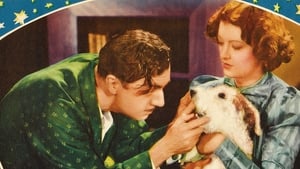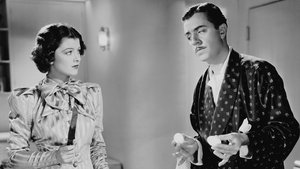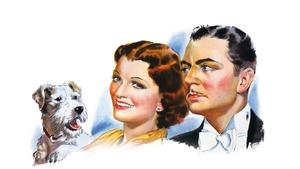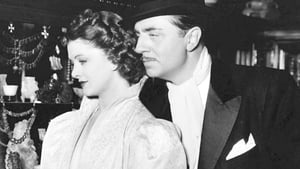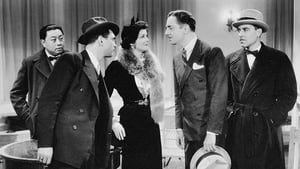Contact: info@alwanfilm.com
Video Sources 0 Views
- Watch trailer
- After the Thin Man

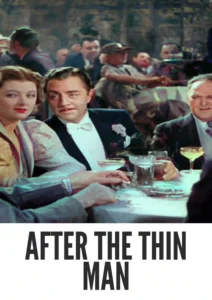
Synopsis
Table of Contents
ToggleReview: After the Thin Man 1936 Colorized – A Classic Whodunit Unveiled in Vibrant Color

Introduction
After the Thin Man 1936 Colorized stands as a testament to the enduring popularity of the mystery genre and the timeless appeal of its iconic detective duo. In this article, we’ll explore the significance of this early colored film, delving into its impact on audiences and its lasting legacy in the realm of detective cinema.
Check The Full Colorized Movies List
Check Our Colorized Movies Trailer Channel
Understanding After the Thin Man 1936 Colorized: Director, Cast, and Genre
Directed by the esteemed W.S. Van Dyke, After the Thin Man 1936 Colorized showcases his knack for crafting suspenseful narratives that keep audiences on the edge of their seats. The film features a stellar cast, including William Powell and Myrna Loy, whose on-screen chemistry as Nick and Nora Charles elevates the story to new heights. Blending elements of mystery, comedy, and romance, “After the Thin Man” (1936) invites viewers into a world of intrigue and deception, where every clue leads to unexpected twists and turns.
Exploring the World of After the Thin Man 1936 Colorized: Plot and Characters
At its core, After the Thin Man 1936 Colorized follows the adventures of amateur sleuths Nick and Nora Charles as they unravel a complex murder mystery in San Francisco. When Nora’s cousin is accused of murder, the couple must navigate a web of deceit and betrayal to uncover the truth. Along the way, they encounter a colorful cast of characters, each with their own secrets and motives, as they race against time to solve the case.
The Art of Film Colorization
Film colorization serves as a transformative tool that enhances the visual experience of classic movies, breathing new life into timeless stories and captivating audiences with vibrant hues. By digitally adding color to black and white films, colorization allows viewers to immerse themselves in the rich tapestry of cinematic worlds, exploring every nuance and detail with fresh eyes and renewed appreciation.
Early Colored Films: A Brief History
The history of colored films traces its roots back to the early days of cinema, with filmmakers experimenting with various techniques to add color to their creations. From hand-tinted frames to early Technicolor processes, the evolution of colored film has been marked by innovation and ingenuity, paving the way for the development of modern colorization techniques that continue to captivate audiences to this day.
After the Thin Man 1936 and Its Early Colored Version
The decision to release After the Thin Man 1936 Colorized in a colorized format was met with both excitement and trepidation. While some welcomed the opportunity to experience the film in vibrant color, others expressed concerns about the potential impact on its visual aesthetic. Nevertheless, the early colored version of After the Thin Man 1936 Colorized offers viewers a fresh perspective on the classic mystery, enhancing its immersive qualities and captivating audiences with its luminous beauty.
The Debate Over Film Colorization
The debate over film colorization continues to divide audiences and critics alike, with proponents praising its ability to breathe new life into classic movies and introduce them to a new generation of viewers, while detractors argue that it compromises the artistic integrity of the original work and diminishes its historical significance. As the debate rages on, filmmakers and audiences alike are left to ponder the merits and drawbacks of colorization in the ever-evolving landscape of cinema.
Examining After the Thin Man 1936 as an Early Colored Film
As with any colorized classic, the impact of colorization on After the Thin Man 1936 Colorized is a matter of personal interpretation. Some may argue that it enhances the film’s visual appeal and immerses viewers in its world, while others may feel that it detracts from the stark beauty of the original black and white version. Regardless of one’s stance on the issue, there’s no denying the enduring power of “After the Thin Man” (1936) as a timeless mystery that continues to captivate audiences with its clever plot twists and unforgettable characters.
Influence and Legacy: After the Thin Man 1936 Colorized’s Impact on Cinema
“After the Thin Man” (1936) has left an indelible mark on the world of cinema, inspiring countless filmmakers and captivating audiences with its timeless tale of mystery and intrigue. From its unforgettable performances to its gripping storyline, the film continues to resonate with viewers of all ages, reaffirming its status as a beloved classic of the detective genre.
Director’s Cinematic Legacy: Beyond After the Thin Man 1936 Colorized
W.S. Van Dyke’s influence extends far beyond “After the Thin Man” (1936), with a diverse body of work that continues to captivate audiences around the globe. From “The Thin Man” series to “Tarzan the Ape Man,” Van Dyke’s films are celebrated for their wit, charm, and sophistication, solidifying his legacy as one of the preeminent directors of Hollywood’s Golden Age. Through his groundbreaking work, Van Dyke has left an indelible imprint on the world of cinema, inspiring generations of filmmakers to follow in his footsteps.
Themes Explored in After the Thin Man 1936 Colorized
“After the Thin Man” (1936) explores a myriad of themes, from the nature of justice to the complexities of human relationships. Through its richly drawn characters and intricate plot twists, the film invites viewers to ponder the intricacies of the human psyche and the moral dilemmas that shape our lives. As audiences immerse themselves in the world of “After the Thin Man” (1936), they are reminded of the timeless truths that bind us together and the enduring power of the human spirit to triumph over adversity.
Reception and Controversy Surrounding After the Thin Man 1936 Colorized
Upon its release, “After the Thin Man” (1936) received widespread critical acclaim, with many praising its clever plot twists, sparkling dialogue, and charismatic performances. However, the decision to release the film in a colorized format sparked debate among purists, reigniting the age-old discussion surrounding film preservation and artistic integrity. Despite the controversy, “After the Thin Man” (1936) remains a beloved classic that continues to captivate audiences with its timeless charm and enduring appeal.
Where to Watch After the Thin Man 1936 Colorized Online
For those eager to experience the timeless magic of “After the Thin Man” (1936), the film is readily available on popular streaming platforms such as Netflix, Amazon Prime, and Hulu. Whether you choose to watch it in its original black and white format or the early colored version, “After the Thin Man” (1936) promises to transport you to a world of mystery and intrigue, where every clue holds the key to unlocking the truth.
FAQs About After the Thin Man 1936
Q: Is “After the Thin Man” (1936) based on a true story? A: No, “After the Thin Man” (1936) is a fictional mystery crafted by screenwriter Albert Hackett, inspired by the characters created by Dashiell Hammett.
Q: Who are the main actors in “After the Thin Man” (1936)? A: “After the Thin Man” (1936) features an ensemble cast led by the dynamic duo of William Powell and Myrna Loy, whose on-screen chemistry as Nick and Nora Charles continues to captivate audiences to this day.
Q: What awards did “After the Thin Man” (1936) win? A: While “After the Thin Man” (1936) did not win any major awards, it received critical acclaim for its clever plot twists, sparkling dialogue, and charismatic performances.
Q: Why was “After the Thin Man” (1936) released in a colorized format? A: The decision to release “After the Thin Man” (1936) in color was made to introduce the film to a new generation of viewers and enhance its visual appeal for modern audiences. While the choice to colorize the film sparked debate among purists, it ultimately allowed “After the Thin Man” (1936) to reach a wider audience and ensure its continued relevance in the annals of cinematic history.
Conclusion
“After the Thin Man” (1936) remains a shining example of the timeless allure of the mystery genre and the enduring power of cinema to captivate audiences with its clever plot twists, memorable characters, and unforgettable performances. Whether viewed in its original black and white format or the early colored version, the film continues to captivate audiences of all ages, inviting them into a world of intrigue and deception where every clue holds the key to unlocking the truth.


